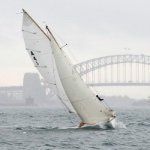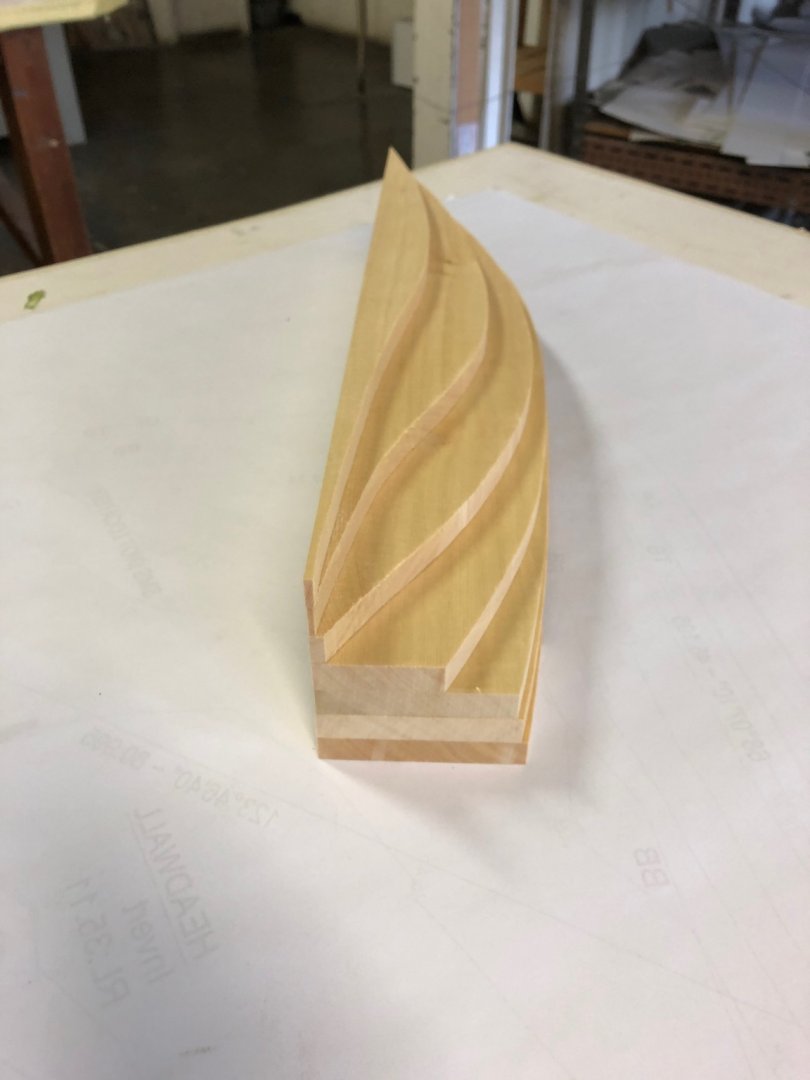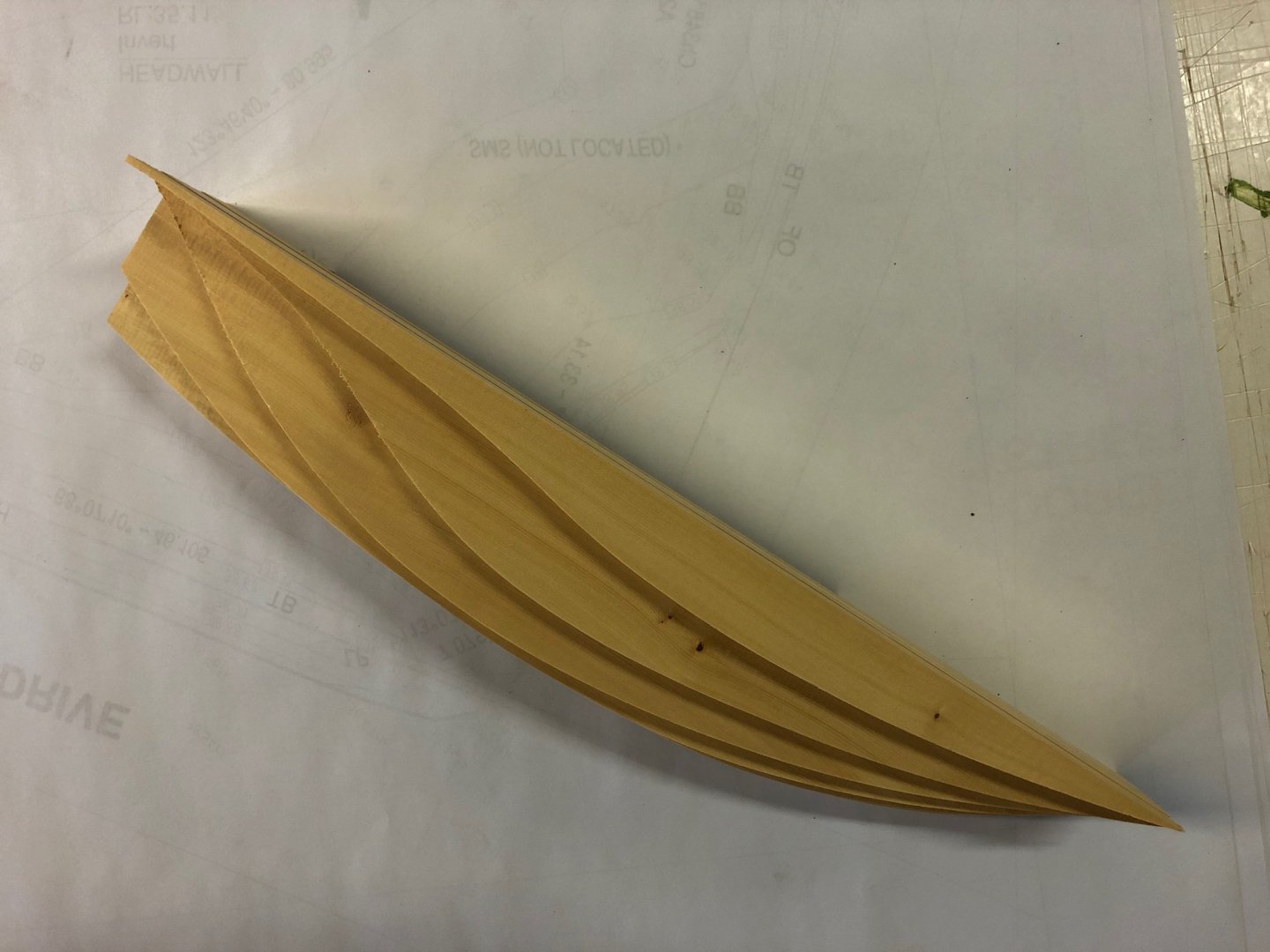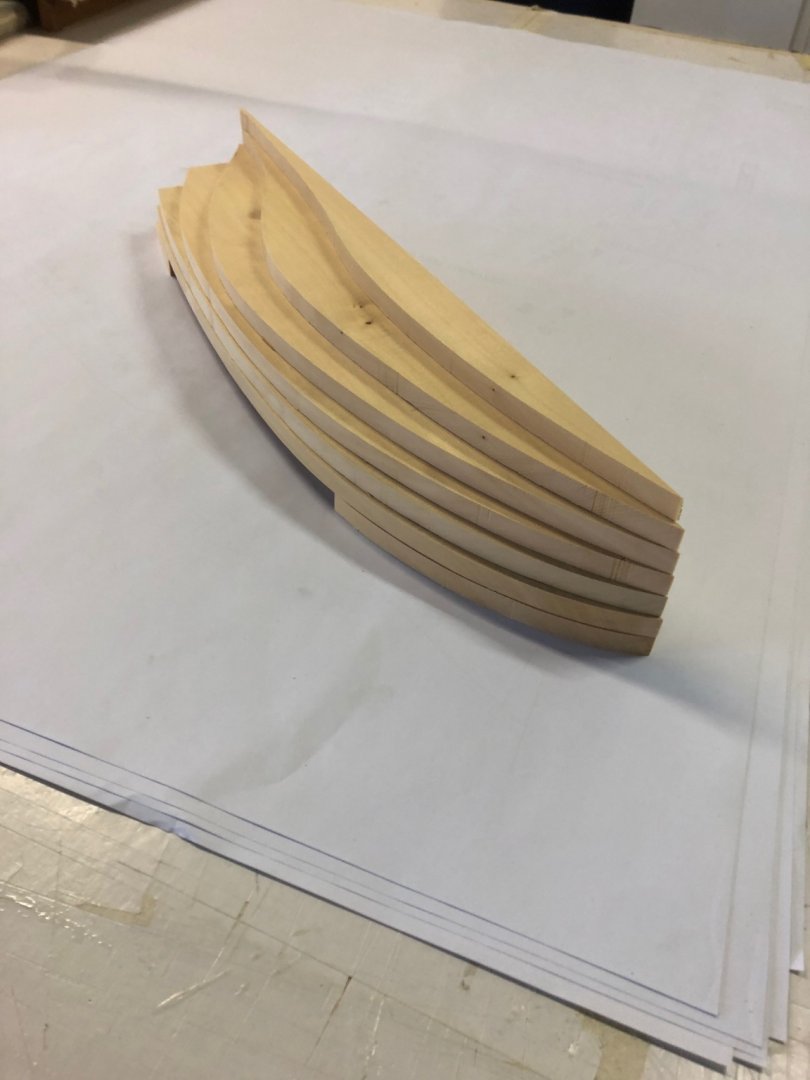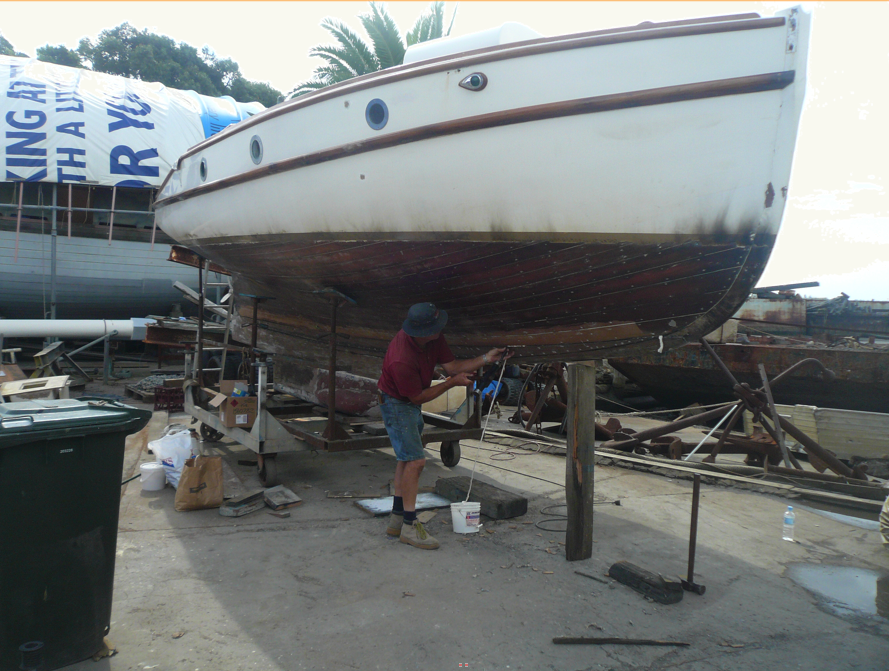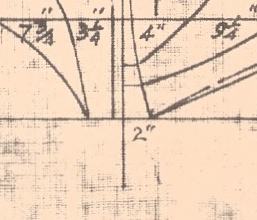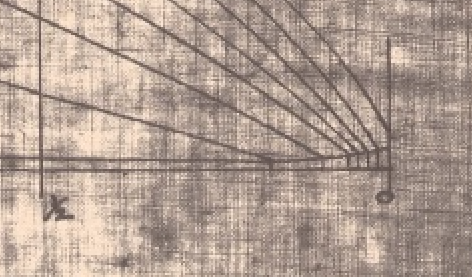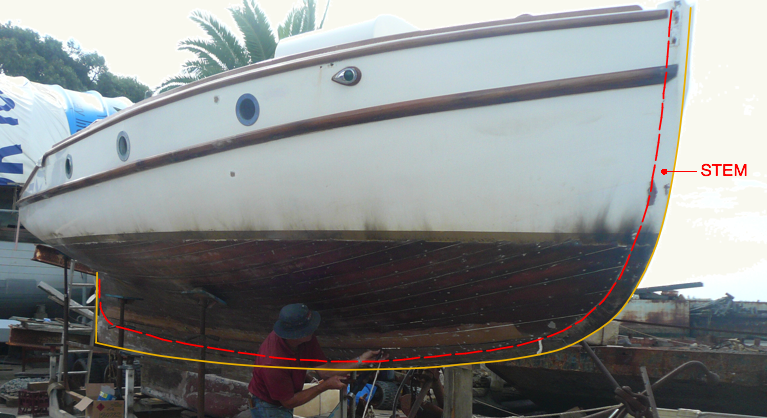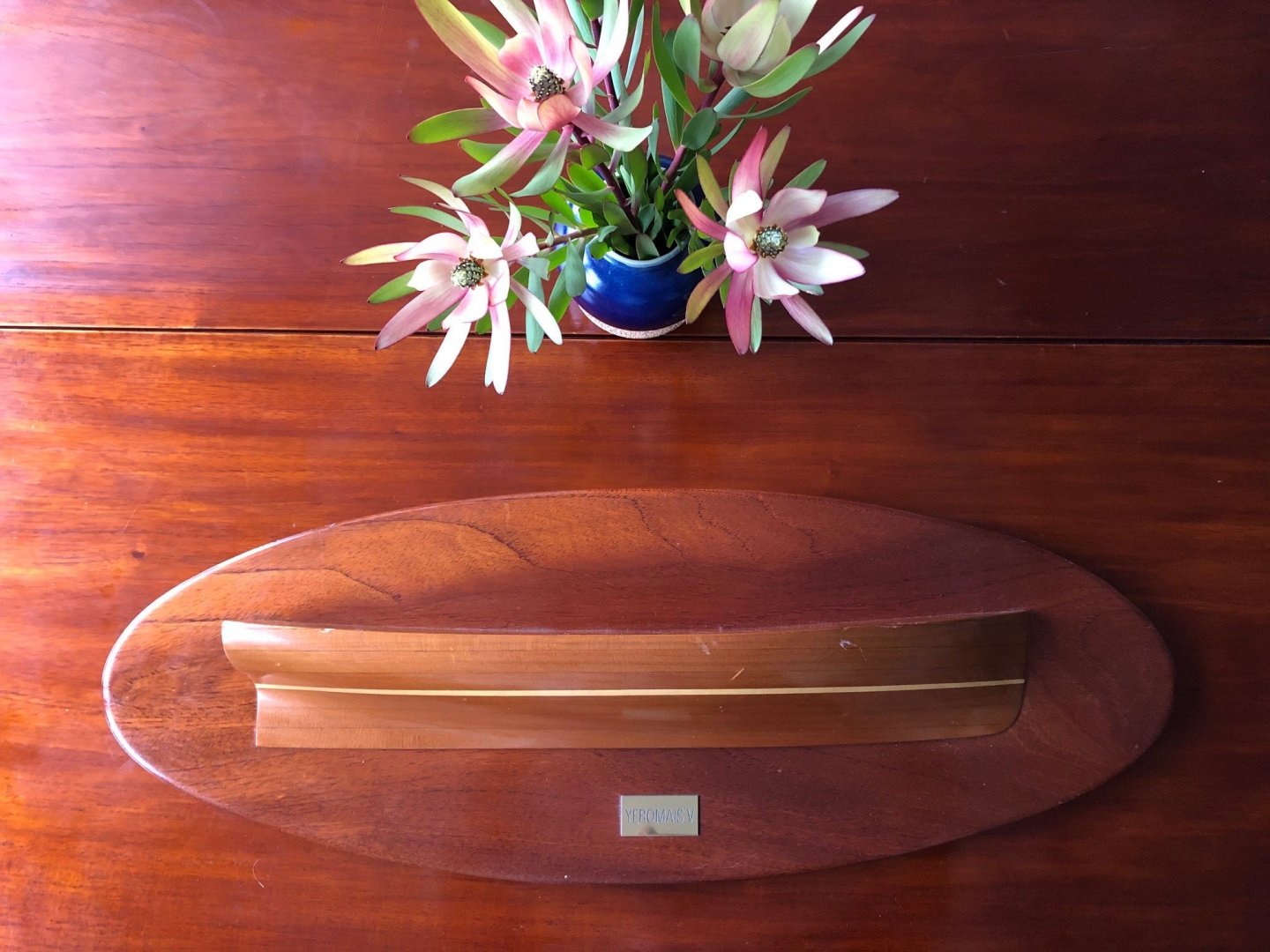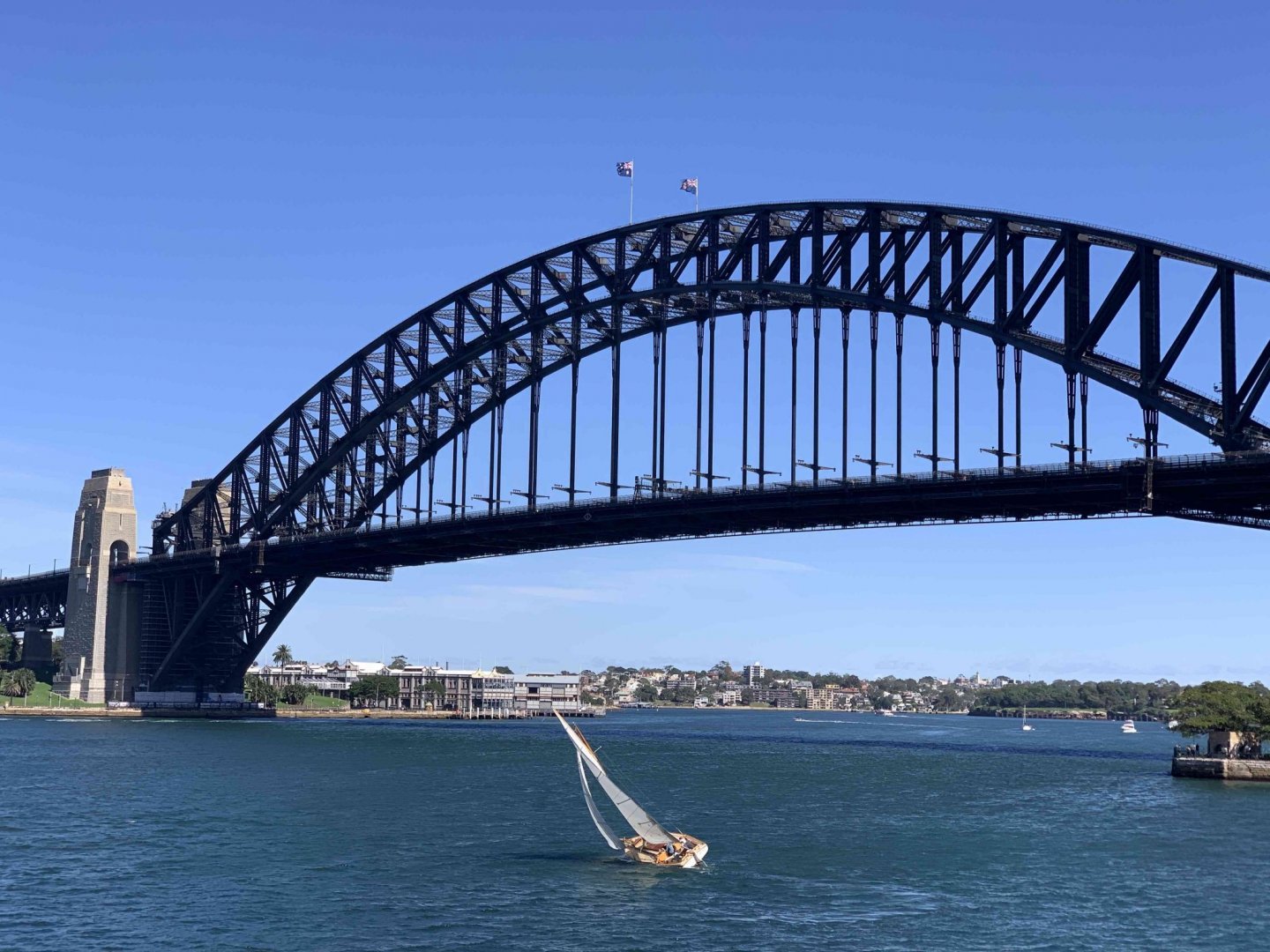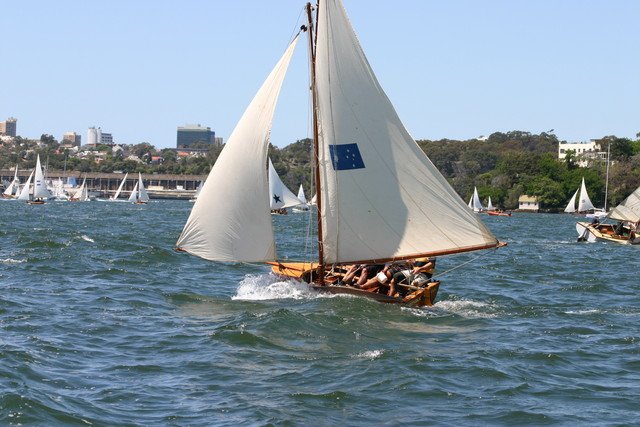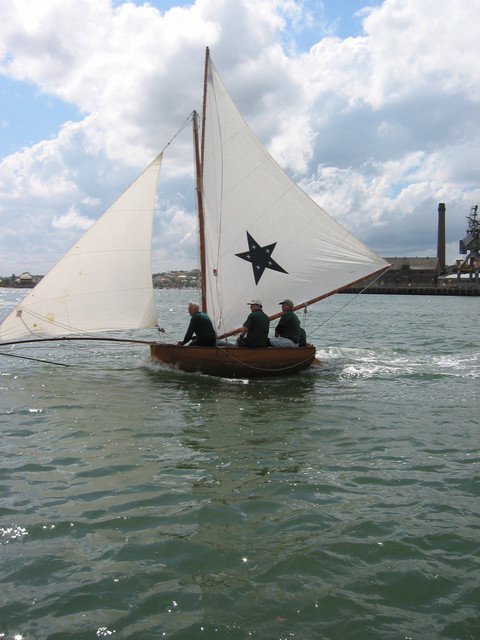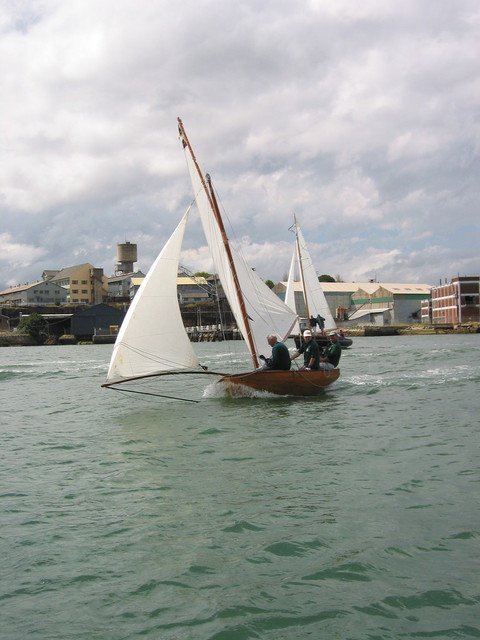-
Posts
818 -
Joined
-
Last visited
Content Type
Profiles
Forums
Gallery
Events
Everything posted by Mark Pearse
-
Hi Carl Sorry for the slow response - golly it's been a long time since I was here last. Yes, this boat has swing centreboard & it's just visible in the photo in post #29. I don't have the open boat book, so I'm not sure on the reference, but in this case (which is typical of a pre-1940 centreboarder) there would be a removable pin at the forward end of the centreboard case as a pivot. The front of the plate is usually straight & the aft edge curved. I have made some progress: purchased timber, scribed the cutting lines & cut them out. I was considering planking over a solid model, but decided against it. So the timber is cut to suit the final size. I tried to get King Billy Pine, a Tasmanian Pine variety that is light weight & straight grained - but my local timber specialist didn't have it so I have used Huon Pine. The timber is a nice pale toast colour & will become a honey brown over time. The next step is to scribe cutting lines on the timber & then do some rough shaping before gluing the pieces (lifts?) together. Best wishes everyone.
-
Hi Stephen I haven't been following for a few months - & it's a pleasure to see your finished model. It's ravishing. The use of marble for the base is beautiful & the case is clever & enlivens the entire effect. I've gained from following the build. Mark
-
Hi Stephen I have a couple of comments, hopefully they might be useful. But they wouldn't affect the rigging so much as giving alternative ideas on how they might have worked with a simple rig that has limitations: Given what you say about the stability of these vessels, it is a possibility that they did not gybe the sails. It is a tricky manoeuvre even in a little dinghy, let alone such a large sail area & a tender boat. It sounds like a possibility that for them, sailing meant heading downwind or within maybe 5-10º off the wind, & to make any angle to the wind they dropped the sails - or a slight angle with no gybing. Why risk it all with a gybe? Or - for one gybe they hoisted one of the sails (port tack, say). If they wanted to change angle to the wind, they dropped that sail & hoisted the other one. Or - looking at you sail plan, I would think they could gybe the foresail on deck - drop it & carry the spar & sail aft, around the mast & forwards again. It would be pretty easy with all that labour on tap.
-
Bravo Stephen, looks amazing. It would still be possible to use the new figures - they could be trimming a sheet.
-
Hi Carl, yes there's a centreboard for certain - but a boat like Karoo would be pivoting & not lifting like the skiffs.
-
Hi Vaddoc I was wondering what video was in store for us - it was the Brit! I've sailed a couple of times as main sheet hand on this boat, it was fun & hard work. But she actually does have keel timbers below the rabbet line, although not much at all. Otherwise there would be nothing for the bottom edge of the garboard to sit against. There's a deadwood aft, but again not large. I think Karoo probably had a more of both than Brittania, but maybe not much. If you see how the lines drawing of Karoo shows the lowest line parallel with the waterline, that was another clue - you would expect the deadwood to slope downwards towards the stern, as in the profile photo below (Karoo replica being repainted) you can see the boat gets slightly deeper as you go to the stern.
-
Hi Vaddoc The clues are in the drawings. In the body plan, the detail below shows the curved line of the planking stopping at a horizontal line, not faired into a deadwood or keel. It's probably clearer in the plan view of the lines, below. At the bow the hull lines do not show the pointed or rounded shape of a stem, they lines stop where the planking would meet the stem. The lines resolve as a line perpendicular to the centreline, not the smooth resolved shape of a stem profile. Below you can see the planking & stem & keel clearly with he paint removed. The second photo shows the rabbet line in dashed red; the yellow ochre line shows the hull profile if it was a centreboarder like Karoo(ie: no ballasted keel below the deadwood). I think the lines show the red dashed line, & left the rest to be resolved during construction.
-
They are like 30' skiffs. On a reach they would be dynamite; it would be interesting to know if they could point well to windward.
-
Hi John, of those two, I'll take the first one thanks. Nice to meet Larry, I just looked at your Nimblet builds, very nice boats.
-
Hi Carl, Vaddoc, others Thank you for your concern & I'm very happy to say that I'm mainly well - apart from a heavy snow-skiing fall 2 weeks ago. Neither arm is up to sailing at the moment, but with the Spring sailing season soon I'll be ready for that. In their eternal wisdom our government decided that sailing & fishing were forms of exercise & so we did plenty of both during the worst of the lockdown in Sydney, the remarkable photo below was taken by a friend - us on a family outing one autumn day on an almost empty harbour. The half model is going slow. The thing I've been researching is to confirm that the outside line on the sheer plan (on the drawings above) is the rabbet line ie: does not include stem or keel timbers. I borrowed a half model of the Yeromais (copy of Karoo, slightly revised bow lines), below. It's been made to the rabbet line, I think. I'm not ready to start building, but the prep is ticking over. I'm considering a planked half model, so the stem & keel timbers would be separately visible. I want to be sure it's correct, history can be based on errors. I've been able to get some poor photos of the Karoo as she is now, I've yet to do a close examination of them, but I believe they support my thoughts. I hope to visit her soon, when Karoo is next slipped, so I can take some dimensions etc. It's a couple of hours north of here at Lake Macquarie, she's been covered to a motor boat used as a starter boat for sailing clubs over the last 30 or 40 years. Little bit more on the "beam" discussion - Vaddoc you will be interested to hear what I read: in the early 1900s Cliff Gale (designer of Karoo), raced on a lot of smaller skiffs, one of which was in the 10' class. They would now be called an "unlimited" class, so no limit to the sail area; the one rule was that the hull itself could only be 10' long. This boat had a 10' beam, so as wide as it was long....sounds impossible, & it was difficult to build. I will copy recent photos of 10 footers, the beam works because the hulls are shallow - hence "skiff". It doesn't look crowded, but 3 or 4 men in 3.1m is pretty tight. I would guess these are 2.5m beam. (my boat is visible behind in one, the pale grey stern)
-
Hi Vaddoc, This has been fun. The model is lovely & you've been very inventive in how you approached the technical aspects.
-
There's a realistic sense in the variety of postures, hair, skin colour, seating position etc. It's looking very good.
-
The stands are very nice Maury, they look elegant & suit the boat. Do they need anything further to stabilise the model, or just the two parts are enough?
-
Hi Steven I'm not trying to bring on another round of pun-making, but have you considered any underhand grips?
-
Not to give too much input: but I agree with Michael. The foot of a mainsail is usually either laced or you have an adjustable outhaul, not both. If it's laced, you'd usually do a clew lashing. I also prefer a loose foot, for the adjustment possibilities it gives.
-
Hi Vaddoc You're making good progress, & those runner blocks for the deck are excellent, angled for the lead angle. On the things you're not sure about, hopefully some comments below might help. But they are just my opinions, & it is a model rather than a real boat - don't feel obliged to do the same thing as you'd do on a yacht. 1. On the top of the coaming isn't practical, too many things would get caught around them & also injury risk. My suggestion is the outside of the coaming, but they shouldn't need mounting blocks. 2. I don't think that's ok, it would foul for sure - sheets should lead fully inside the shrouds or fully outside. Outer jibs are always going to be set more loosely than inner ones, & the sheeting line would likely go outside the shrouds. 3. Blocks on the clew of any headsails is a risk on a real yacht - even a 10mm diameter sheet can hurt a lot if the wind is up & the sail is flogging, a block would be dangerous. I think that a 2:1 system that has to tack around the forestay would be trouble in general. But if you still want to proceed (reality with modelling being your own decision of course), you can mount the end wherever you want....what about making the sheet block a becket block & tie it off there? 4. If you prefer not to have winches, then a separate tackle is one easy way to get sufficient sheet tension. I can't speak generally about boats in general, but I have used one system where you have a separate block & tackle somewhere handy & after tacking someone gets it out & puts one end of the tackle on the sail & the other end somewhere close to the cleat & hauls on the tackle. Then removes the slack from the jib sheet & puts the tackle away again. A handy-billy is what we call it. So if you follow this approach the sheet would just be a single line going to the cleat. Hope it helps, if it's not clear let me know.
-
Bravo Keith, & it's nice to see the model photographed in daylight. There must be an interesting system for the ventilation, & I would guess that some vents might not ever be rotated forwards - you'd probably always want the heads & bilges to be sucking air out.
-
Hi Vaddoc Your horn cleats are very delicately shaped, beautifully done. Did you decide to keep the mainsail loose-footed? (A previous post you mentioned lacing it to the boom).
-
Hi Steven what is the rope that's like a downhaul - it's going downwards & in your photo is to the left of the mast? Is it to tension downwards against the halyard pulling up?
-
The soapstone stands look beautiful. Would you be able to post a photo to show more detail? thanks
- 81 replies
-
- egyptian
- byblos ship
-
(and 1 more)
Tagged with:
About us
Modelshipworld - Advancing Ship Modeling through Research
SSL Secured
Your security is important for us so this Website is SSL-Secured
NRG Mailing Address
Nautical Research Guild
237 South Lincoln Street
Westmont IL, 60559-1917
Model Ship World ® and the MSW logo are Registered Trademarks, and belong to the Nautical Research Guild (United States Patent and Trademark Office: No. 6,929,264 & No. 6,929,274, registered Dec. 20, 2022)
Helpful Links
About the NRG
If you enjoy building ship models that are historically accurate as well as beautiful, then The Nautical Research Guild (NRG) is just right for you.
The Guild is a non-profit educational organization whose mission is to “Advance Ship Modeling Through Research”. We provide support to our members in their efforts to raise the quality of their model ships.
The Nautical Research Guild has published our world-renowned quarterly magazine, The Nautical Research Journal, since 1955. The pages of the Journal are full of articles by accomplished ship modelers who show you how they create those exquisite details on their models, and by maritime historians who show you the correct details to build. The Journal is available in both print and digital editions. Go to the NRG web site (www.thenrg.org) to download a complimentary digital copy of the Journal. The NRG also publishes plan sets, books and compilations of back issues of the Journal and the former Ships in Scale and Model Ship Builder magazines.


